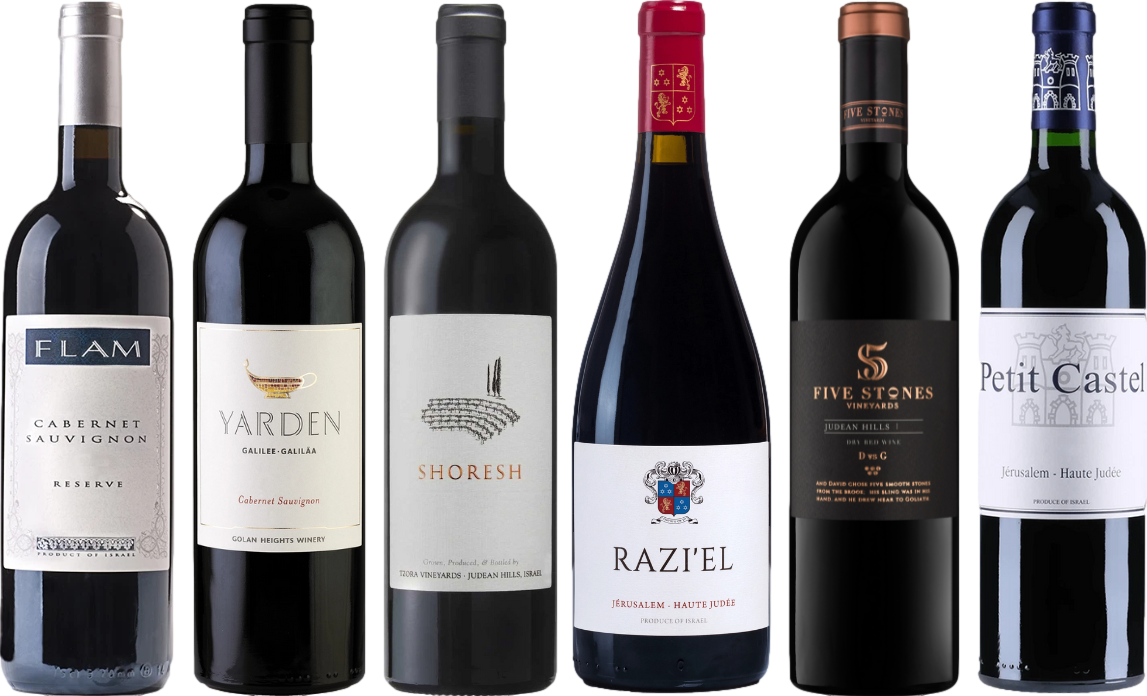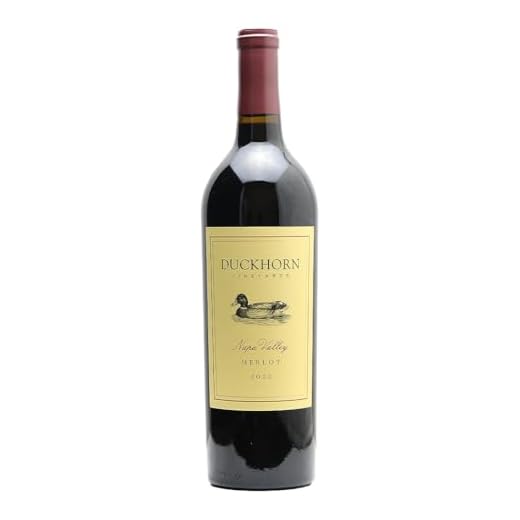



Yes, this particular varietal is typically categorized as a non-sweet selection. With its balanced acidity and moderate tannins, it offers a smooth experience for the palate. Expect fruit-forward notes like plum, cherry, and blackberry, which contribute to its approachable character without overwhelming sweetness.
For those who appreciate a more complex flavor profile, look for bottles that showcase earthy undertones or hints of spice. Regions such as Bordeaux and Napa Valley produce exceptional examples that highlight the varietal’s versatility. When considering food pairings, opt for roasted meats or hearty pasta dishes to complement its rich profile.
While sweetness can vary across different producers, the majority lean towards a drier expression, making it a reliable choice for individuals seeking a less sugary option. Always check the label or consult with a knowledgeable retailer to ensure you’re selecting a bottle that aligns with your preferences.
Is Merlot a Dry Red Wine
Yes, this variety is classified as a non-sweet option. It typically features lower sugar content, resulting in a full-bodied experience. The flavor profile often includes notes of dark fruits like black cherry and plum, complemented by subtle hints of chocolate and herbs.
Characteristics to Consider
The acidity level in this type of beverage is moderate, balancing the richness of the fruit flavors. Tannins are generally smooth, making it approachable for those new to the world of fermented grape beverages. This characteristic makes it a versatile choice for pairing with various dishes, from grilled meats to hearty pastas.
Food Pairing Suggestions
For an optimal dining experience, consider pairing with roasted lamb or mushroom risotto. The acidity and tannin structure enhance the flavors of the meal, creating a harmonious balance. Avoid overly sweet dishes, as they may clash with the inherent dryness of the beverage.
Understanding Dryness in Red Wines
To assess the dryness of red beverages, focus on the residual sugar content, which significantly influences the overall taste. Typically, a level below 1% residual sugar indicates a non-sweet profile. Most often, the perception of dryness is heightened by the presence of tannins, acidity, and alcohol content.
Tannins and Acidity
Tannins, derived from grape skins, seeds, and stems, impart astringency and structure. Higher tannin levels lead to a more pronounced dry sensation. Acidity also plays a pivotal role; wines with elevated acidity can enhance the perception of dryness even with slight residual sweetness.
Alcohol Content
Alcohol influences the body and mouthfeel. Beverages with higher alcohol percentages often feel fuller and can mask sweetness, contributing to the impression of a drier taste. When exploring options, consider those with alcohol levels around 13.5% and above for a more robust experience.
Ultimately, personal preference guides your choice. Experimenting with different styles while paying attention to sugar, tannin, acidity, and alcohol will enhance your understanding of how these elements create the desired sensation in your glass.
Characteristics of Merlot Wine
This varietal is known for its smooth texture and approachable nature. The flavor profile typically includes notes of dark fruits like black cherry, plum, and blackberry, often complemented by hints of chocolate, coffee, or vanilla due to oak aging. These wines generally exhibit a medium to full body, providing a satisfying mouthfeel.
Color and Aroma
The color ranges from deep ruby to a nearly opaque purple, indicative of its rich fruit concentration. Aromas can vary significantly but often feature fruity and floral notes, with subtle herbal undertones. The olfactory experience is usually inviting, making it a favorite among a broad audience.
Tannins and Acidity
Tannins are typically soft and round, contributing to the smooth palate rather than astringency. Acidity levels are moderate, which aids in balancing the fruitiness and enhancing food pairing versatility. This characteristic makes it suitable for various culinary accompaniments, from roasted meats to pasta dishes.
Tasting Notes: Sweetness vs. Dryness
For those exploring flavor profiles, understanding the balance between sweetness and dryness is crucial. When tasting, focus on the perception of sugar and acidity. A notable characteristic of certain varietals is their ability to present fruit-forward flavors while maintaining a bone-dry finish.
Assessing Sweetness
To evaluate sweetness, consider the following:
- Look for fruit aromas such as cherry, plum, or raspberry. These can suggest a perceived sweetness.
- Take note of the mouthfeel. A round, smooth texture often complements fruitiness, enhancing the sensation of sweetness.
- Check the finish. A lingering sweetness can indicate residual sugar, even if the initial impression is dry.
Identifying Dryness
For a wine to be classified as dry, it should exhibit:
- High acidity, which balances sweetness and enhances freshness.
- Complex tannins that provide structure and can create a perception of dryness on the palate.
- A lack of sugar, often achieved through fermentation processes that convert most sugars into alcohol.
In my experience, tasting is subjective. Each person’s palate reacts differently, and personal preferences play a significant role. Experimenting with different pairings and styles will deepen your understanding and appreciation of these subtle nuances.
Factors Influencing Merlot’s Dryness
Several key elements determine the perceived dryness of this varietal.
- Grape Ripeness: Harvest timing directly affects sugar levels. Grapes picked later may have higher sugar content, influencing sweetness perception.
- Fermentation Process: The choice of yeast and fermentation temperature can impact residual sugar. Complete fermentation typically yields a drier product.
- Winemaking Techniques: Techniques such as maceration and aging can enhance tannin extraction, contributing to a more astringent sensation that balances sweetness.
- Acidity Levels: Higher acidity can create an impression of dryness, counterbalancing any residual sugars present.
- Blend Components: Sometimes blended with other varietals, the percentages of these can shift the overall flavor profile, affecting the perception of sweetness.
Understanding these factors allows for a better appreciation of the nuances found within each bottle. When tasting, consider how these elements interact to shape your experience.
Comparing Merlot with Other Red Wines
When assessing this particular variety against others like Cabernet Sauvignon and Pinot Noir, the difference in body, flavor profile, and acidity becomes apparent. Cabernet Sauvignon typically possesses a more robust structure, with pronounced tannins and a darker fruit character, making it an excellent choice for those who prefer a fuller-bodied experience. On the other hand, Pinot Noir tends to be lighter, showcasing a higher acidity and more delicate fruit flavors, ideal for those who enjoy a more nuanced palate.
The smoothness and approachability of this grape make it a favorite among casual drinkers. Its fruit-forward nature contrasts sharply with the often more complex and layered profiles of its counterparts. While some may find the latter leaning towards a drier style, this varietal remains accessible, offering a balance that appeals to a broader audience.
In terms of food pairings, this grape works exceptionally well with a variety of dishes, from grilled meats to pasta in rich sauces. Its versatility is often highlighted in contrast with other varietals that may require more specific pairings due to their stronger characteristics. For instance, the boldness of a Syrah might complement hearty stews, while this grape’s profile allows it to harmonize seamlessly with a wider range of cuisines.
Ultimately, the choice between these options boils down to personal preference. Those who favor a softer, fruitier experience will likely gravitate towards this varietal, while enthusiasts seeking depth and intensity may prefer the complexity found in Cabernet Sauvignon or the elegance of Pinot Noir. Understanding these distinctions will enhance your enjoyment and appreciation of each unique offering.
Choosing the Right Food Pairings for Merlot
For a seamless dining experience, consider pairing this varietal with dishes that complement its rich flavors. Grilled meats, especially lamb and beef, enhance the wine’s bold profile. Roasted chicken, particularly with herb seasoning, also makes a delightful match.
Vegetarian Options
When serving plant-based dishes, roasted vegetables or hearty mushroom risotto work exceptionally well. The earthiness of mushrooms balances the wine’s fruitiness. For a lighter option, consider a salad with beets and goat cheese, which provides a nice contrast.
Cheese Pairings
For cheese lovers, opt for aged cheeses like cheddar or gouda. These pair beautifully with the wine’s tannins. A charcuterie board featuring salami or prosciutto can elevate the experience, accentuating the wine’s complexity.
For a unique side, try preparing fresh Brussels sprouts in a skillet. Their slight bitterness will complement the wine’s profile while adding texture to the meal.
| Food Pairing | Flavor Profile |
|---|---|
| Grilled Lamb | Savory, Rich |
| Roasted Chicken | Herbaceous, Tender |
| Mushroom Risotto | Earthy, Creamy |
| Aged Cheddar | Sharp, Nutty |
FAQ:
What are the flavor characteristics of dry Merlot?
Dry Merlot typically features flavors of dark fruits, such as black cherry, plum, and blackberry. It often has herbal notes, hints of chocolate, and sometimes a touch of spice from oak aging. The tannins in Merlot are usually softer compared to other red wines, making it very approachable. The acidity is balanced, contributing to its smooth finish. While Merlot is dry, it can still present a rich mouthfeel, which adds to its appeal as a versatile wine that pairs well with various foods, from grilled meats to pasta dishes.
Is Merlot always considered a dry red wine?
Merlot is primarily classified as a dry red wine, but there are exceptions. Most Merlot wines have low sugar content, typically less than 1% residual sugar, which aligns with the characteristics of dry wines. However, some winemakers may produce sweeter variations, especially in certain regions or styles. These sweeter Merlots might appeal to those who prefer a fruitier flavor profile. Generally, if you are looking for a dry red wine, Merlot is a safe choice, but it’s wise to check the specific label for details on sweetness.







